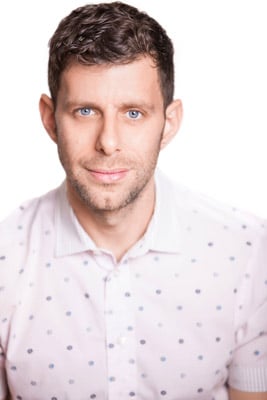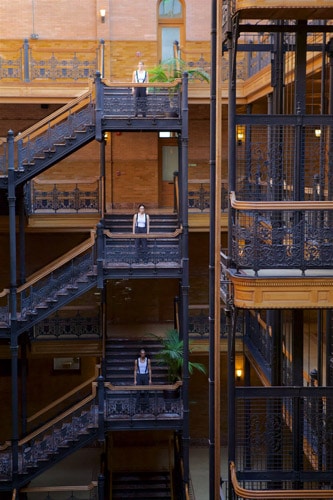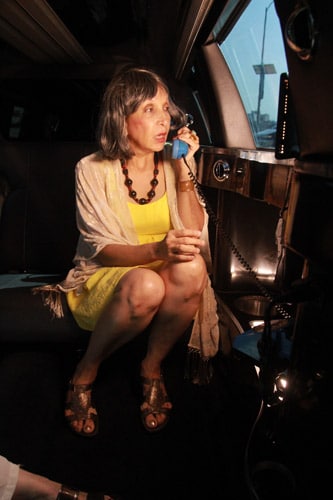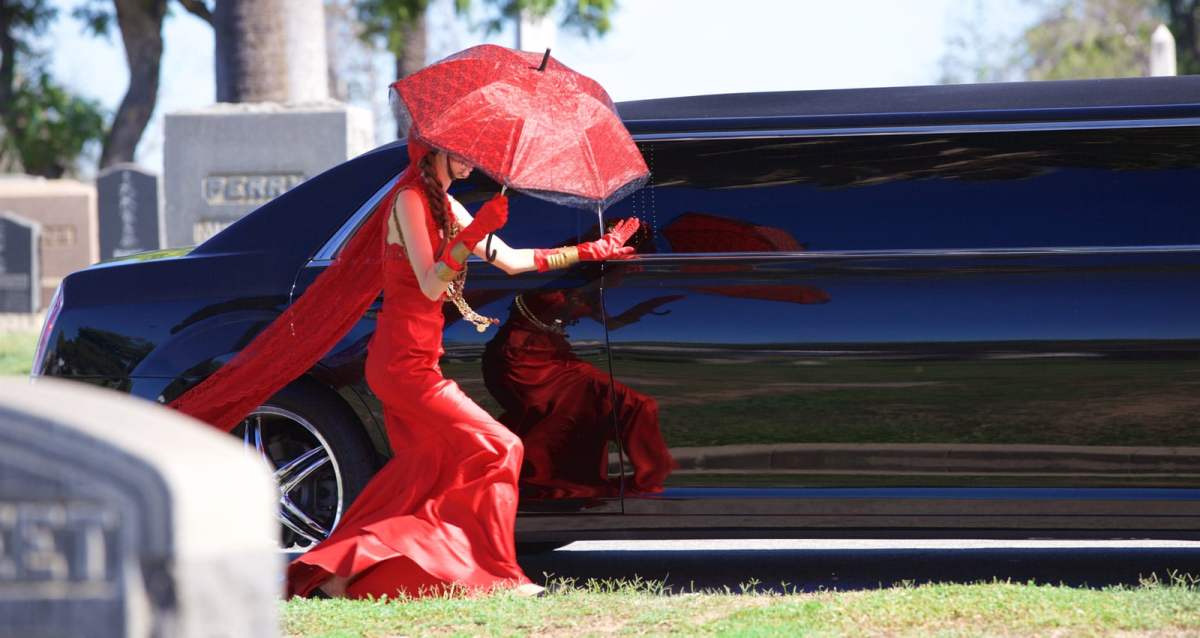Yuval Sharon is the founder and artistic director of Los Angeles’ home for experimental opera, The Industry. In 2014, The Industry worked with composer Christopher Cerrone and choreographer Danielle Agami in an adaptation of Italo Calvino’s novel, “Invisible Cities.” The production took place in LA’s historic Union Station and was a finalist for the 2014 Pulitzer Prize for Music.Last year, LA Philharmonic Music & Artistic Director Gustavo Dudamel and President and CEO Deborah Borda appointed Sharon as the organization’s Artist-Collaborator. The three-year residency began this season and will continue through the LA Philharmonic’s Centennial, in 2018-19. The appointment aided Sharon in a collaboration with composer Rand Stieger on an ongoing installation for the 2016-17 season, entitled “Nimbus,” at the Walt Disney Concert Hall. German media has tipped him to replace Alvis Hermanis as the director of a 2018 production of “Lohengrin” in Bayreuth as well.
Sharon and his team received enormous international acclaim for the one and only live performance of “Hopscotch,” a mobile opera for 24 cars. The production involved six principal composers, six librettists, and scores of musicians and other artists.The recording will be come out on January 13, followed by a release event entitled “Hopscotch in Concert” on January 20 at the University of Southern California’s Newman Recital Hall, hosted by Sharon. I spoke to him about the “Hopscotch” experience, Wagner, and art in dark times.

VAN: Is there a unifying theme to everything The Industry does?
Yuval Sharon: There’s not necessarily one goal that I could state. We’re not really goal-oriented, we’re much more process-oriented. We’re investigating this very unstable art form of opera, its multiplicity and possibility for diversity, and allowing that to take us into directions that we don’t expect. To think of opera as responsive to an environment, a time, and a community, and let that dictate how we develop ideas.
I think that’s what a new definition of opera could be. If there is any one overarching aim for the work we do, it is to expand the definition of what opera can be, and its role in a contemporary society. In Los Angeles that has meant exploring how opera could be part of the fabric of a city in which everyday life is already so surreal and artistic.
In an interview with newclassic.la, you talk about going to the opera as a teenager with your dad and that, while you enjoyed it, it seemed like a “weird, outdated ritual, happening too far away to have any visceral impact on [you].” How do you make sure your own work doesn’t feel outdated?
I see a particular possibility in the realm of new work. I think conventional wisdom is that new work is for insiders who already love opera. Then they can go to the next step and appreciate a new version of the opera. But I think it’s actually exactly the opposite. I think the way to bring new audiences and new life into the operatic genre is by focusing on brand new creation and looking for things that already feel like they speak to our society and our world—more importantly with the tools of our world, the latest technologies and whatnot.

You made an announcement last year regarding your vision for The Industry and your residency at the LA Phil, in which you talk about how the traditional and innovative must be in constant communication. How did this fit in to your production of Wagner’s “Die Walküre” in Karlsruhe, Germany?
That one felt like a very natural fit for me because the Wagernian idea of Gesamtkunstwerk is close to the work I’ve been doing with The Industry—the exploration of opera as the meeting point of all the different art forms. An element of the Wagnerian theatrical ideal is to incorporate technology. The project in Karlsruhe had a lot of technology including live video and live amplification throughout the piece, using different media to help tell the story.
The latest from VAN, delivered straight to your inbox
According to your website,“Hopscotch” is inspired in part by the stream-of-consciousness novel of the same name by Argentinian writer Julio Cortázar. What about the novel inspired the ideas for this production?
The thing I loved about the novel was its nonlinearity. It’s a collection of chapters that can be read in a lot of different orders, but there are two primary ones. You can go through chapter by chapter, or you can go through the prescribed order Cortázar offered, which jumps around the narrative.
I loved that as a formal idea and that felt very appropriate to the experience of driving through a city. Even though it is a linear relationship of going from one neighborhood to another or one street to another, the actual experience of that is quite jumbled and diverse. To move through neighborhoods in LA is like moving from one world to another.
The original idea was to adapt the Cortázar novel, but we didn’t get the rights for that, so we borrowed the idea of the form and created a narrative that was specific to the neighborhoods we drove in, the communities we engaged with, and the time and place we were doing the piece in.
How did you choose the sites for “Hopscotch” to take place?
It grew organically. The production designer, Jason Thompson, and I, drove around downtown LA and imagined the theatrical potential within sites, thinking about the path from one to the other. Which streets might reflect the LA experience the most—we chose not only the most beautiful streets, but very ordinary ones as well, and sometimes you’d arrive at a space that was truly extraordinary.
Up until a few weeks before the piece, we were still fiddling with the routes. We’d say, “If we turn right on this street and left on this street we have a much more beautiful vista,” or “We’re about to go into a gorgeous theater. Why don’t we find a very ordinary route on the way there.” To find that contrast—that was what the geographic composition of it was all about.
Then, audience members would experience it in different directions. For example, on the Red Route, there was one place in a park, and depending on which direction you were going you either went from the park to this car with blacked-out windows [or vice versa]. That experience of going from a sunny, beautiful, outdoor vista to this dark abyss is very different from the opposite, going from a darkened car and emerging into the park.

It’s very much more concerned with the audience experience rather than being didactic or saying, “This is the point.”
Yes. In this respect, I feel very connected to the literary theory of Roland Barthes and Calvino as well, the author of “Invisible Cities.” There was a great line that Chris Cerrone, the composer of “Invisible Cities,” used from the novel: “It’s not the voice that commands the story, it’s the ear.” I’ve always loved the idea that the storyteller is meant to provide a series of signs and guideposts, and it’s up to the reader to make meaning from those signs. As the storyteller, what I can do is create these assonances of colors, ideas, and symbols, which form a pathway in which the audience is invited to wander. I think that’s the kind of experience that I really long for.
“Invisible Cities” has been out for a while and had a lot of feedback. Were there reactions to it that surprised you or were different from what you expected?
Yeah! When you leave so much open to the audience, as we do, it means you’re constantly surprised by what people say and how they respond to the work. There were plenty of reactions or ideas that were not at all what I intended, and that was exactly the point. Every audience member who came to “Invisible Cities” or “Hopscotch” had his or her own narrative of the piece, which I think was inherently more interesting than the narrative I could have come up with on my own.
We have this feeling that a director or author of a project should narrow your focus or just tell you one thing. I do not think that takes advantage of what art is really about: ambiguity, openness, a sense of possibility.
What projects are next for The Industry?
We think of opera in terms of its responsiveness. There’s a lot to respond to in our world right now: it’s a very dark time, and our next projects are responsive to the fears that a lot of us are experiencing based on the change of current events.
What I am excited about for the year ahead is that we have this opportunity to say why art still matters in a fake-news world, which people are already talking about as post-fact. Not just opera: where does art in general fit in? The projects that we are planning are all provocative responses to everything that’s happening.
It’s exciting for me because, as part of a smaller organization, I don’t have to worry so much about angering certain people of a certain demographic. I don’t have to be neutral, and I shouldn’t be neutral. People look to artists to be thought leaders. When you have an artist-led organization, you’re able to speak without fear. I hope the projects coming up in the next year will be looked at as fearless critiques of what we are experiencing right now.
Do you think there might be space for something that dreams about what could be, rather than a sort of reactive piece? Maybe a project that looks into a future that’s not as post-apocalyptic as we’ve all been seeing for so long?
I think all artwork contains hope. There is hope at the heart of even the most dismal, dark artwork—if it’s good. There’s this human expression that is given a voice. I don’t think of the pieces we’re doing as being apocalyptic, but I do think of them as being concrete and direct. But I also think you’re right—when you create a piece, you’re also trying to envision a future, to create the building blocks for the future we all want to create. I think the way to do that is to create pieces that respond to the specifics of a community and bring a community together.
Performing arts still matter now because it’s still a community-based experience, very related to the time and place in which it’s being created. Embracing that notion and saying there’s power in that and that the things that bring us together could help us through this darkest of times is still a helpful message.
But yes. I don’t want to say, “The times are dark, so let’s make everyone more depressed by creating only dark artwork.” Then again, creating a daydream of false hope is counterproductive. It’s about finding a balance, and I think we’re exploring that very carefully.

You’re talking about bringing communities together by calling out specific things that are going on. Are these local geographic communities within LA? I know you’re also talking about political communities as well, but are there ones that are more localized and specific to the region?
I think if you want to speak to something national you have to be incredibly specific at the local level. Same with political action, thinking globally but acting locally. When the expression is right, it will work on a global scale. I know that the people who come see our performances are going to be from here. We have some people who travel to us, which is awesome, but I don’t create the pieces for them, I create the pieces for this environment and community. One of the projects we’re doing next year is really specific to the San Pedro neighborhood and harbor communities. We’ll be investigating what those particular communities are about and bringing them to life.
One thing I’d like to add is that, knowing that VAN is a German magazine [We are Berlin-based, but this is our U.S. edition—Ed.]—in Germany it’s very hard for independent artists to start their own organizations. I think for choreographers it might be more standard, but for opera it’s very hard. Having just worked in Germany, it’s very hard for people to wrap their heads around independent production companies that aren’t sponsored by the state. What I’m very grateful for, being an artist in America, is that there’s this entrepreneurial aspect to the work that we can do. As long as I put in the work and figure out how to finance it and produce it, there’s nothing stopping me from doing something. In fact, there are all these incentives built in for me to do it.
That’s something that makes an organization like The Industry doable in a city like LA, as opposed to some European cities. Even though the state subsidizes so much art-making, that sense of free art-making in terms of performance…there’s a lot of potential here in America. ¶
Subscribers keep VAN running!
VAN is proud to be an independent classical music magazine thanks to our subscribers. For just over 10 cents a day, you can enjoy unlimited access to over 875 articles in our archives—and get new ones delivered straight to your inbox each week.
Not ready to commit to a full year?
You can test-drive VAN for one month for the price of a coffee.


Comments are closed.